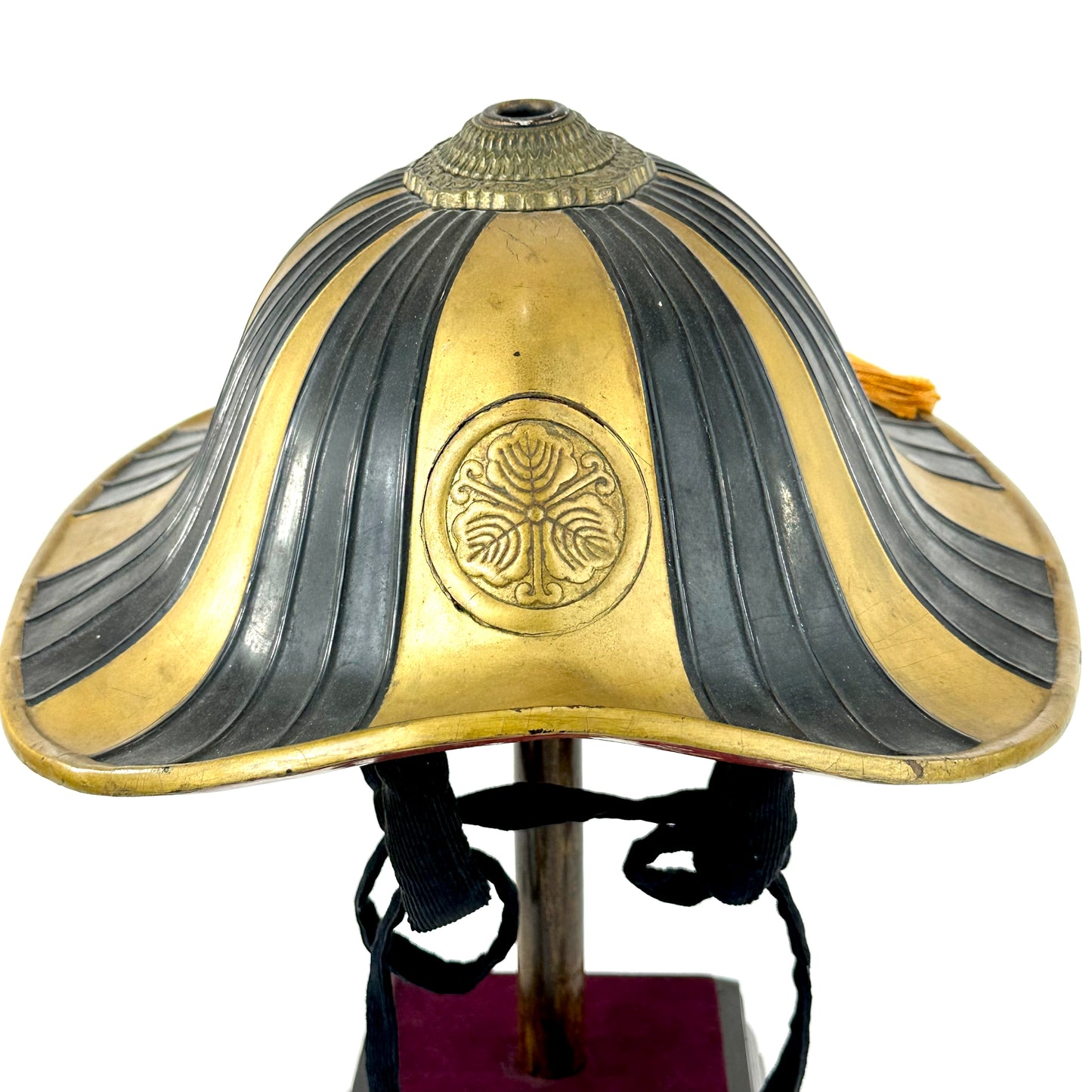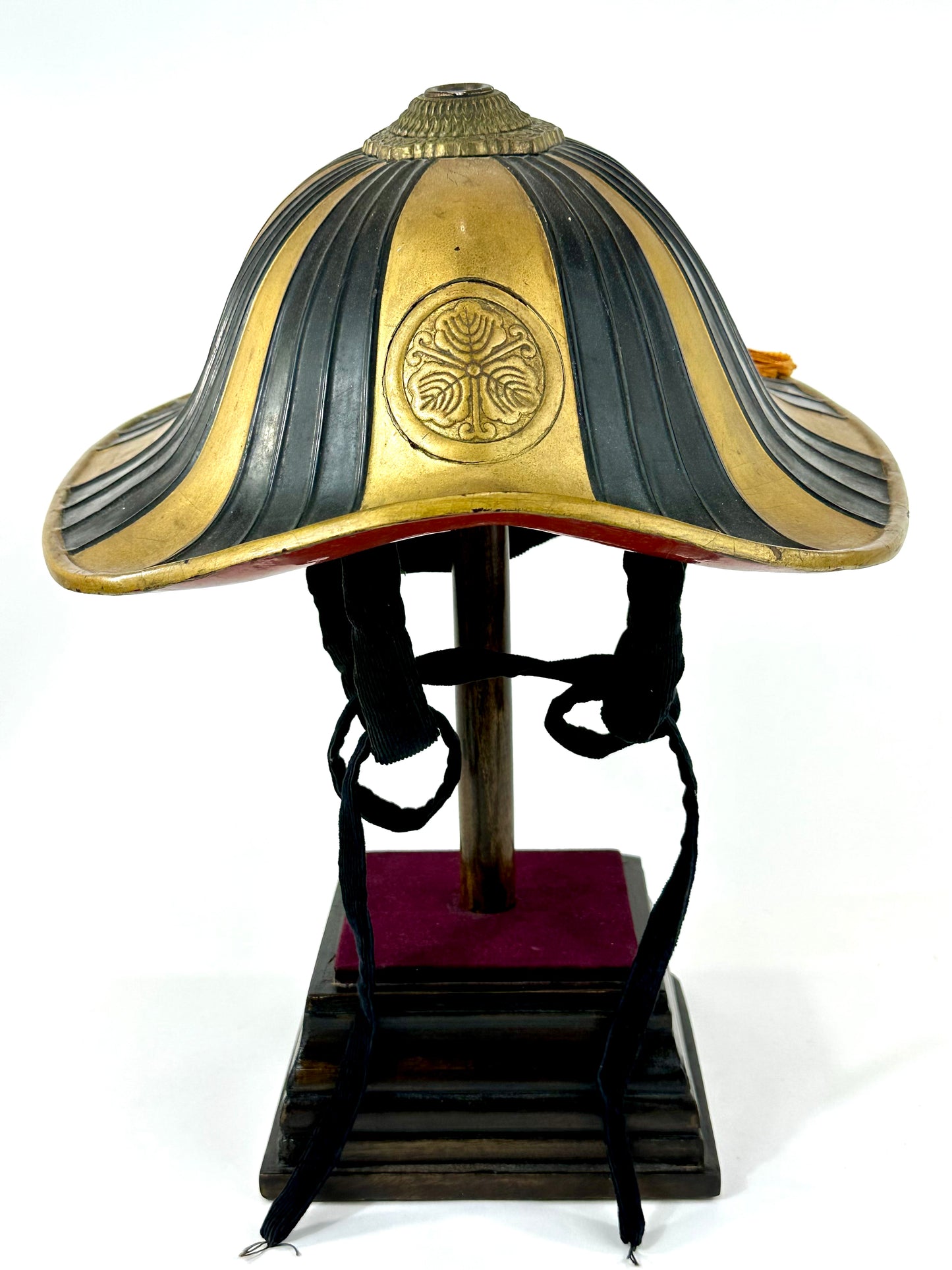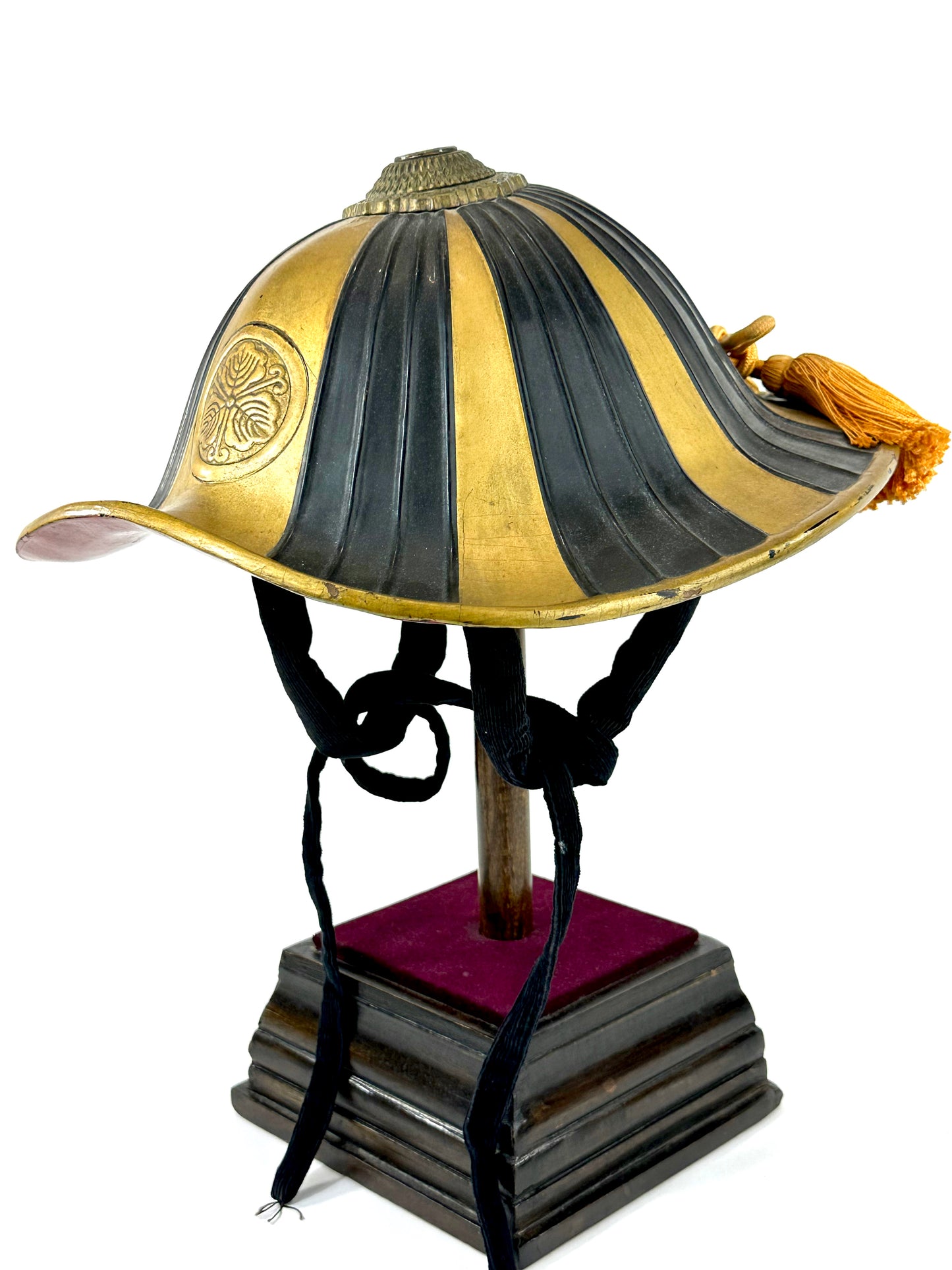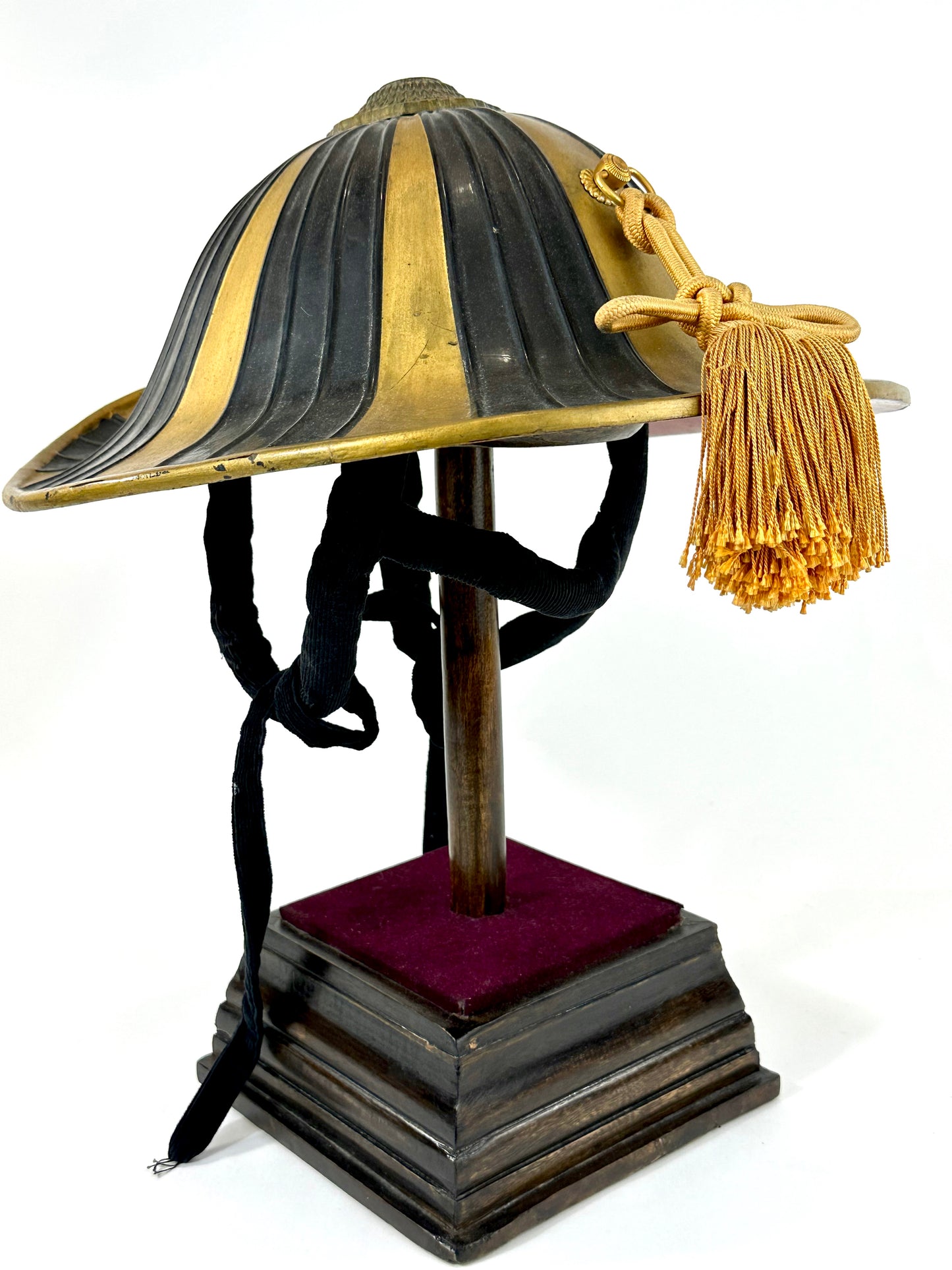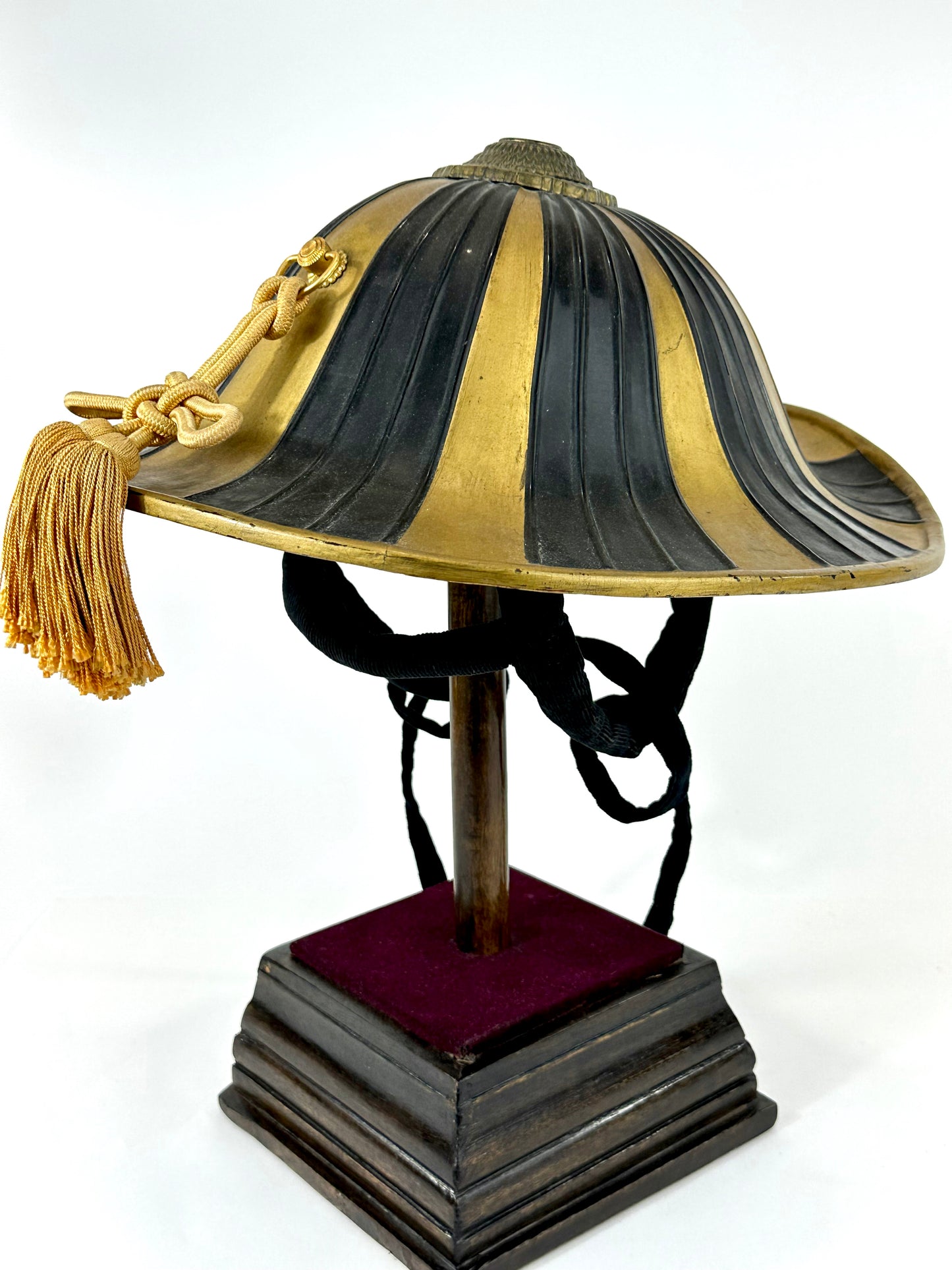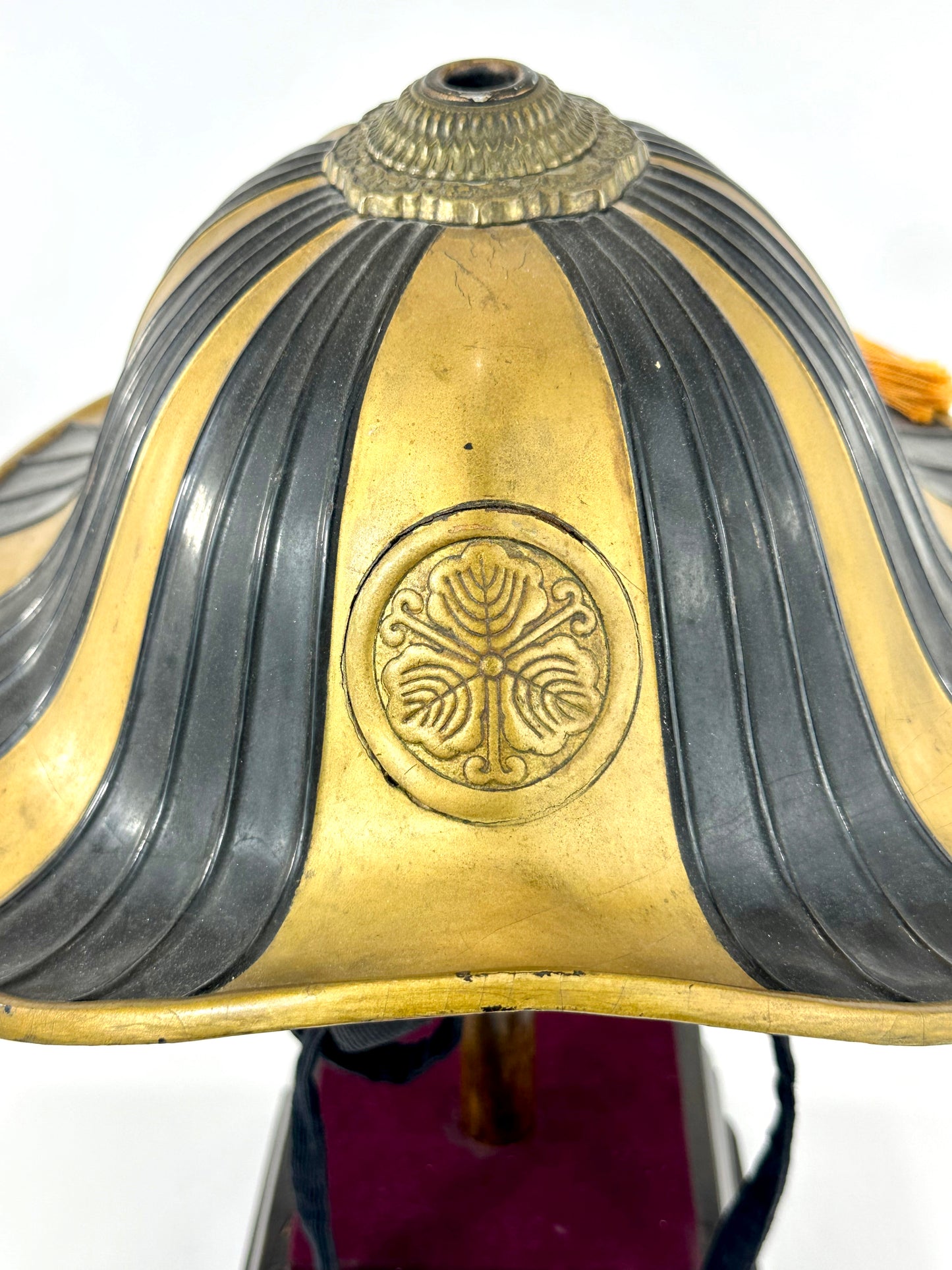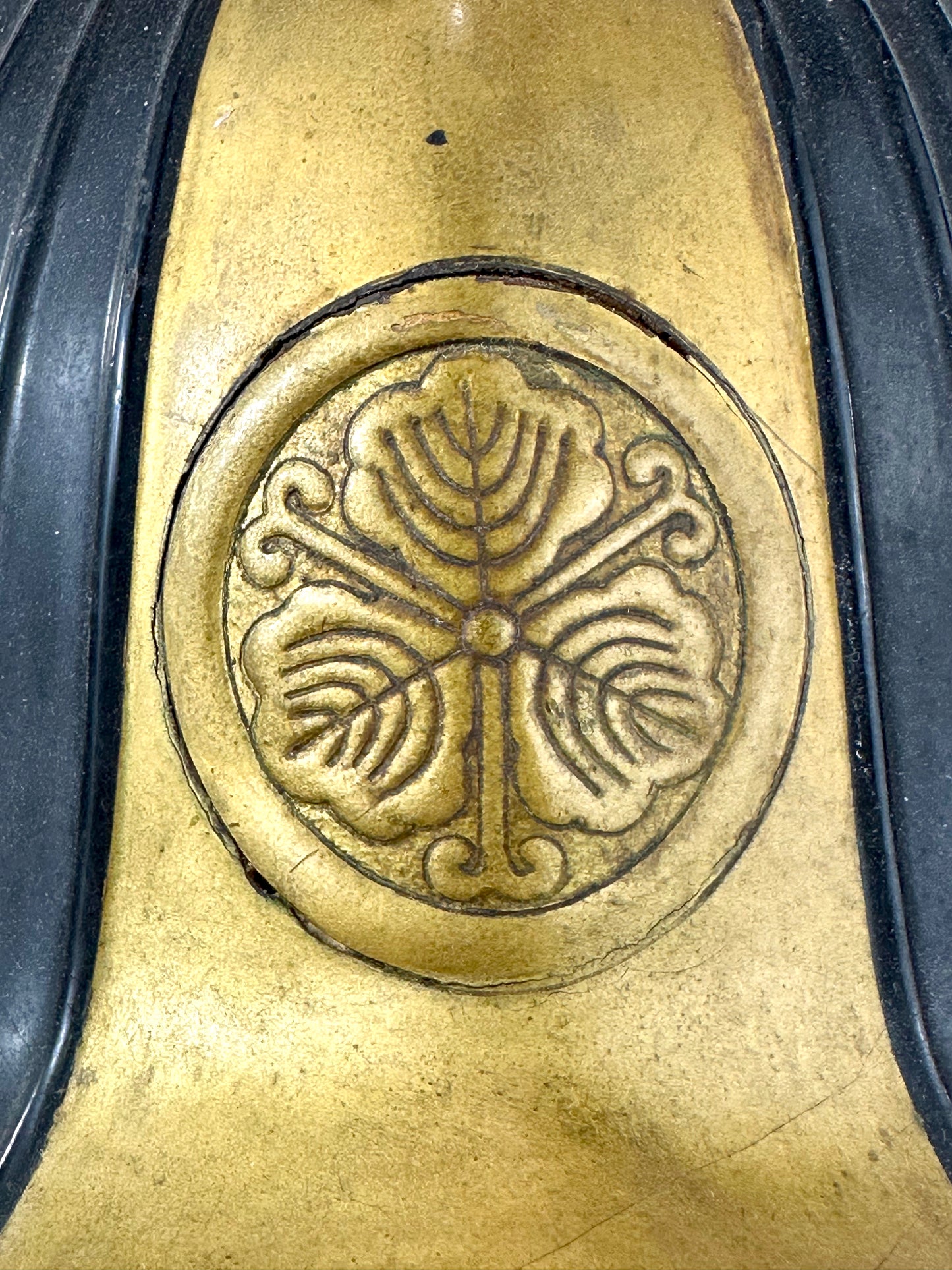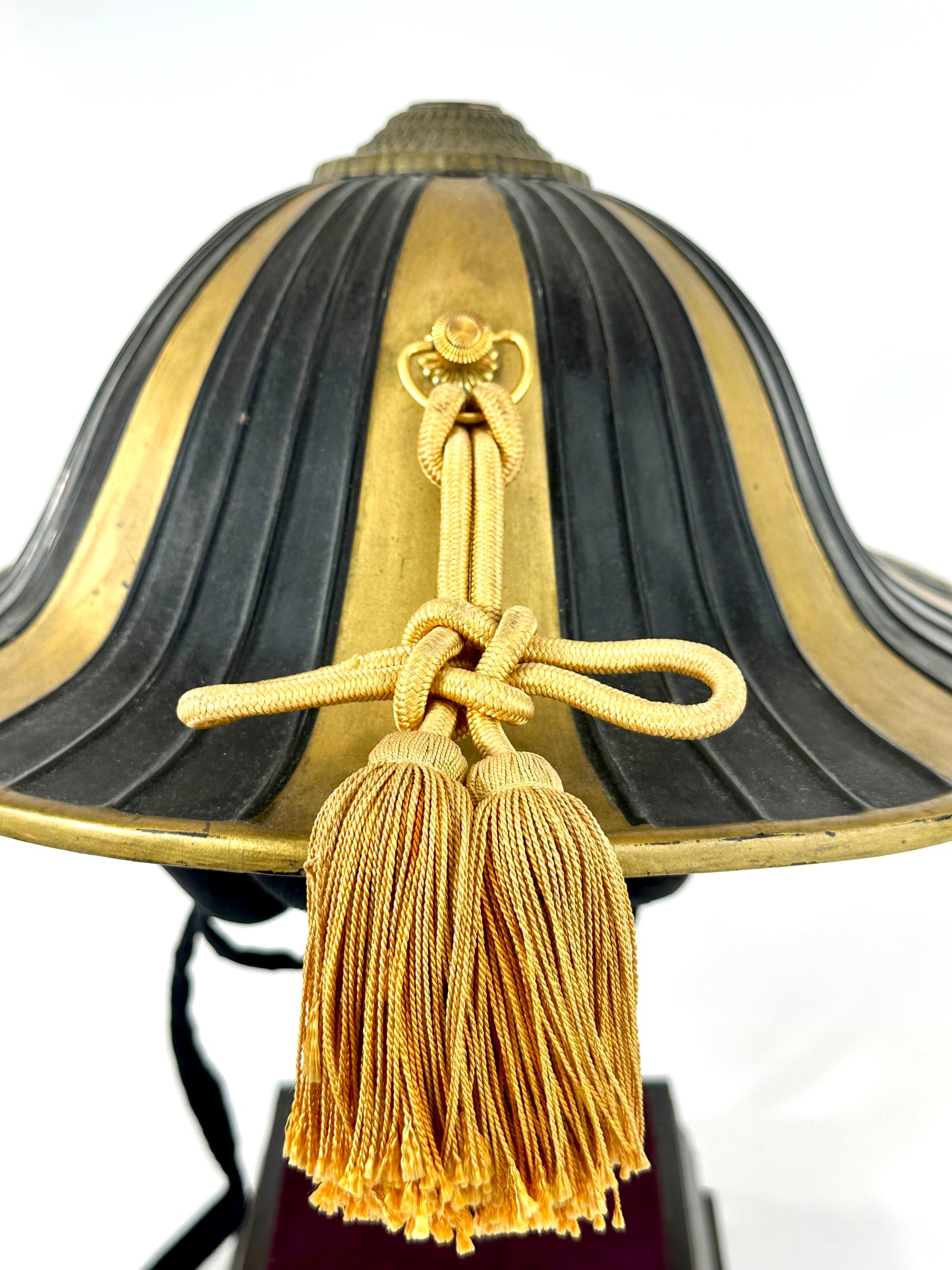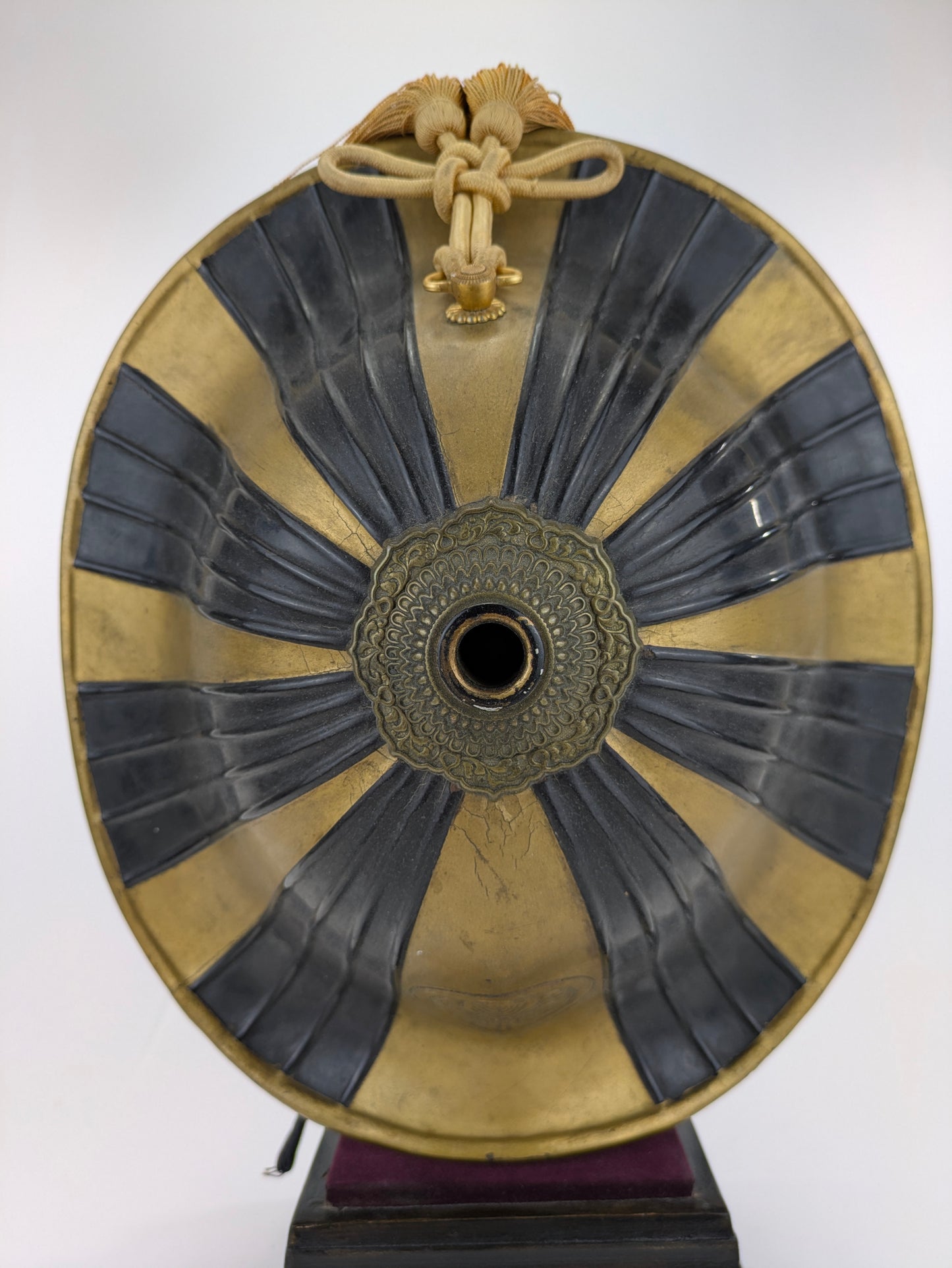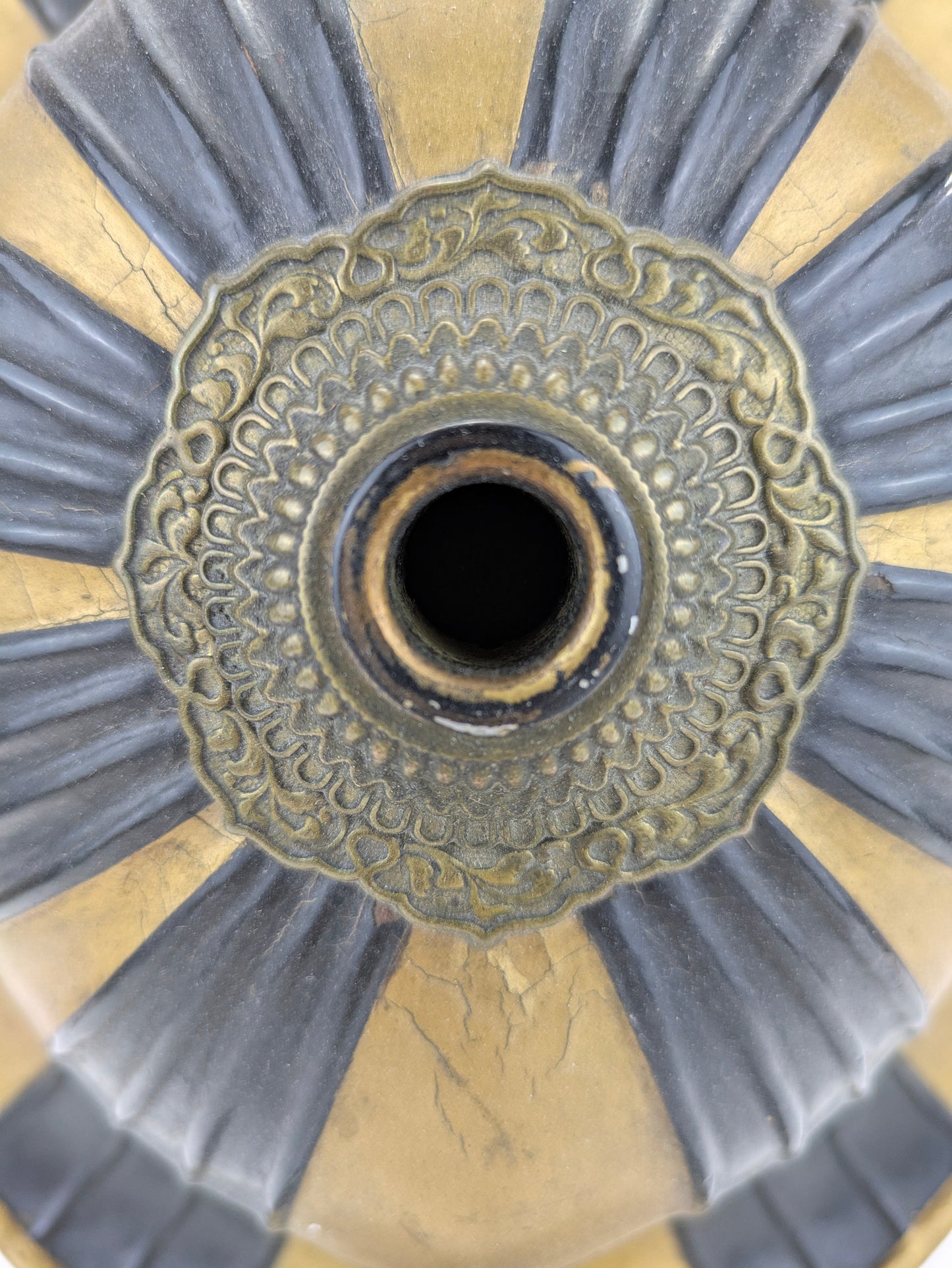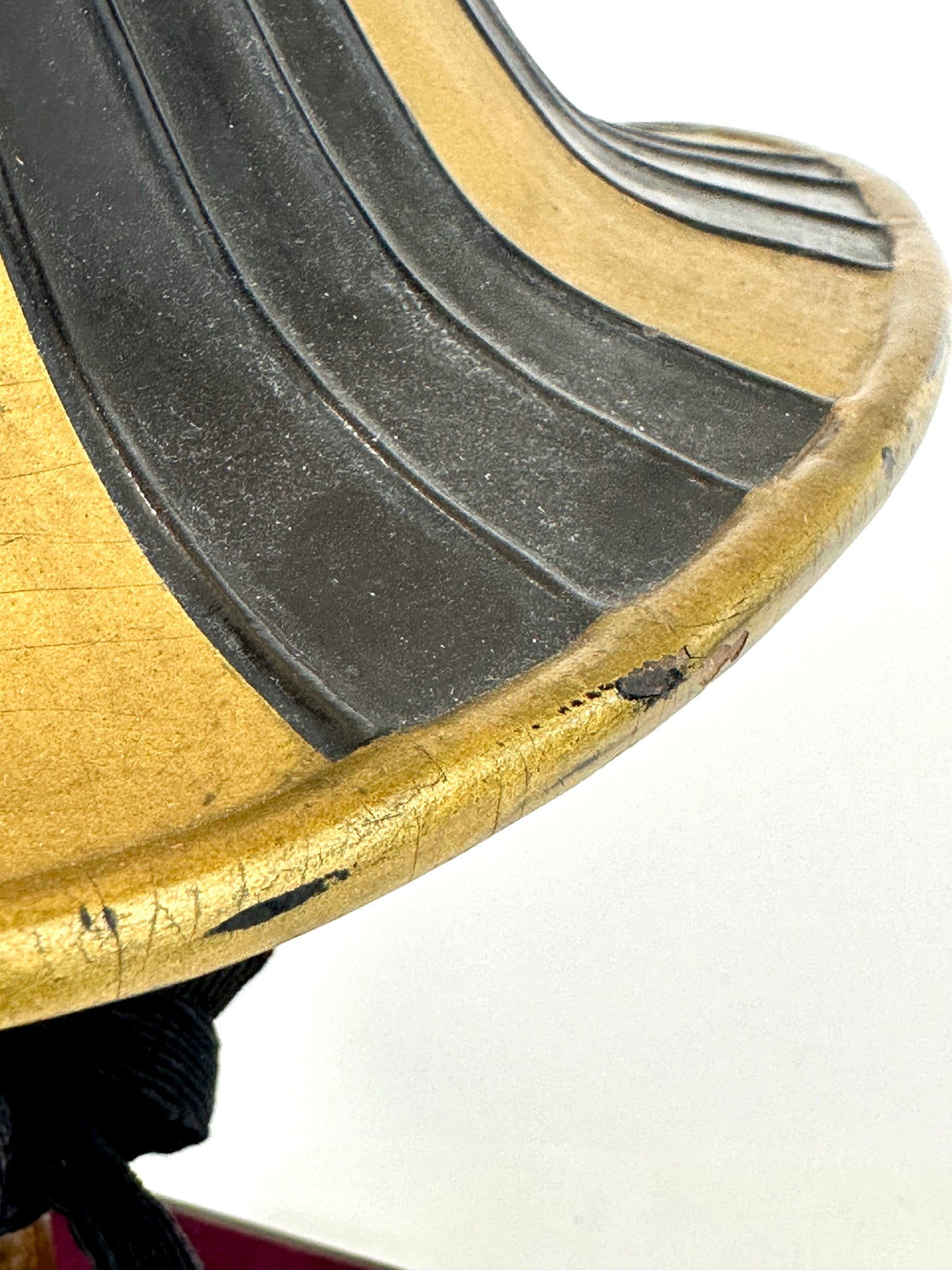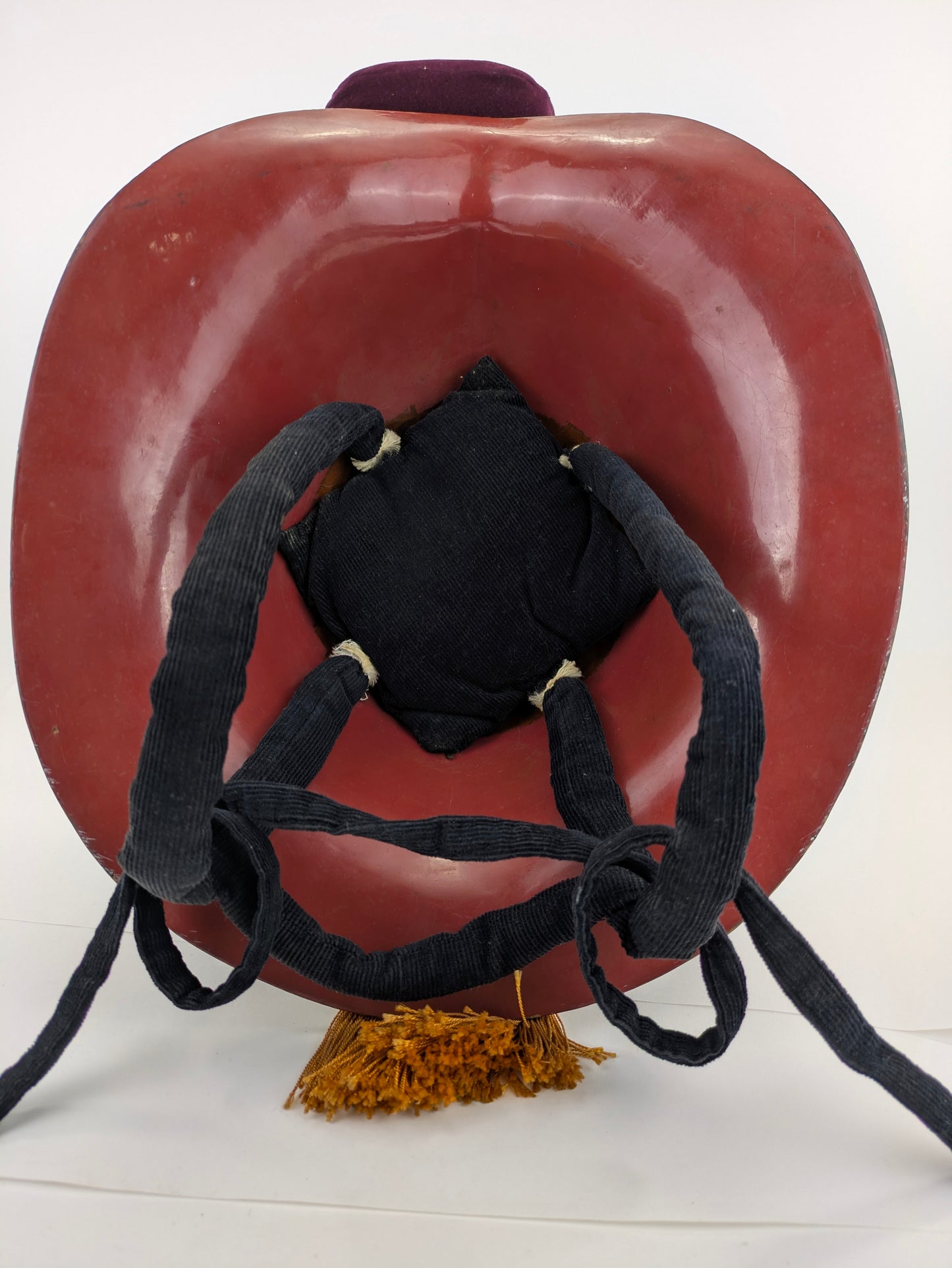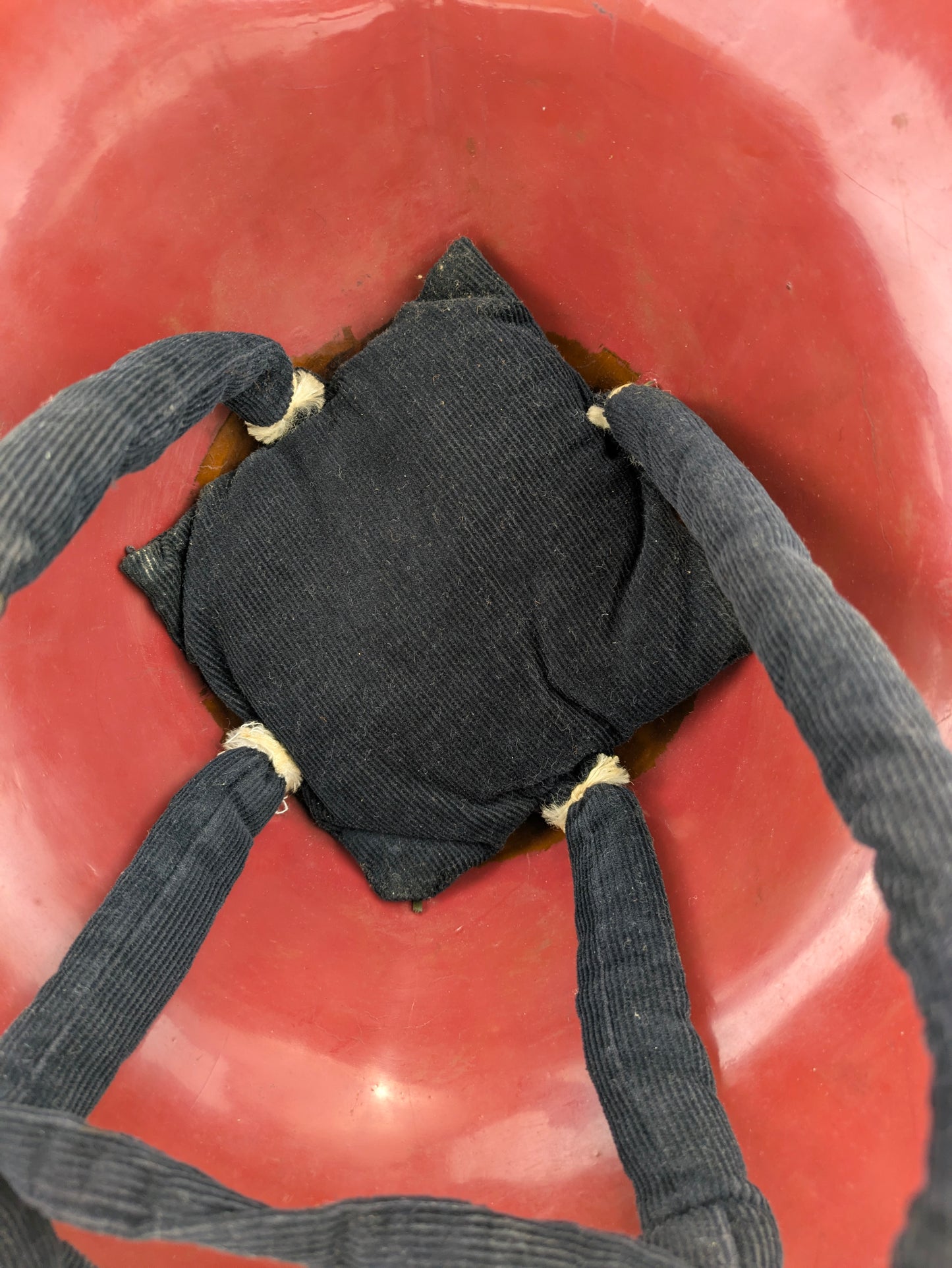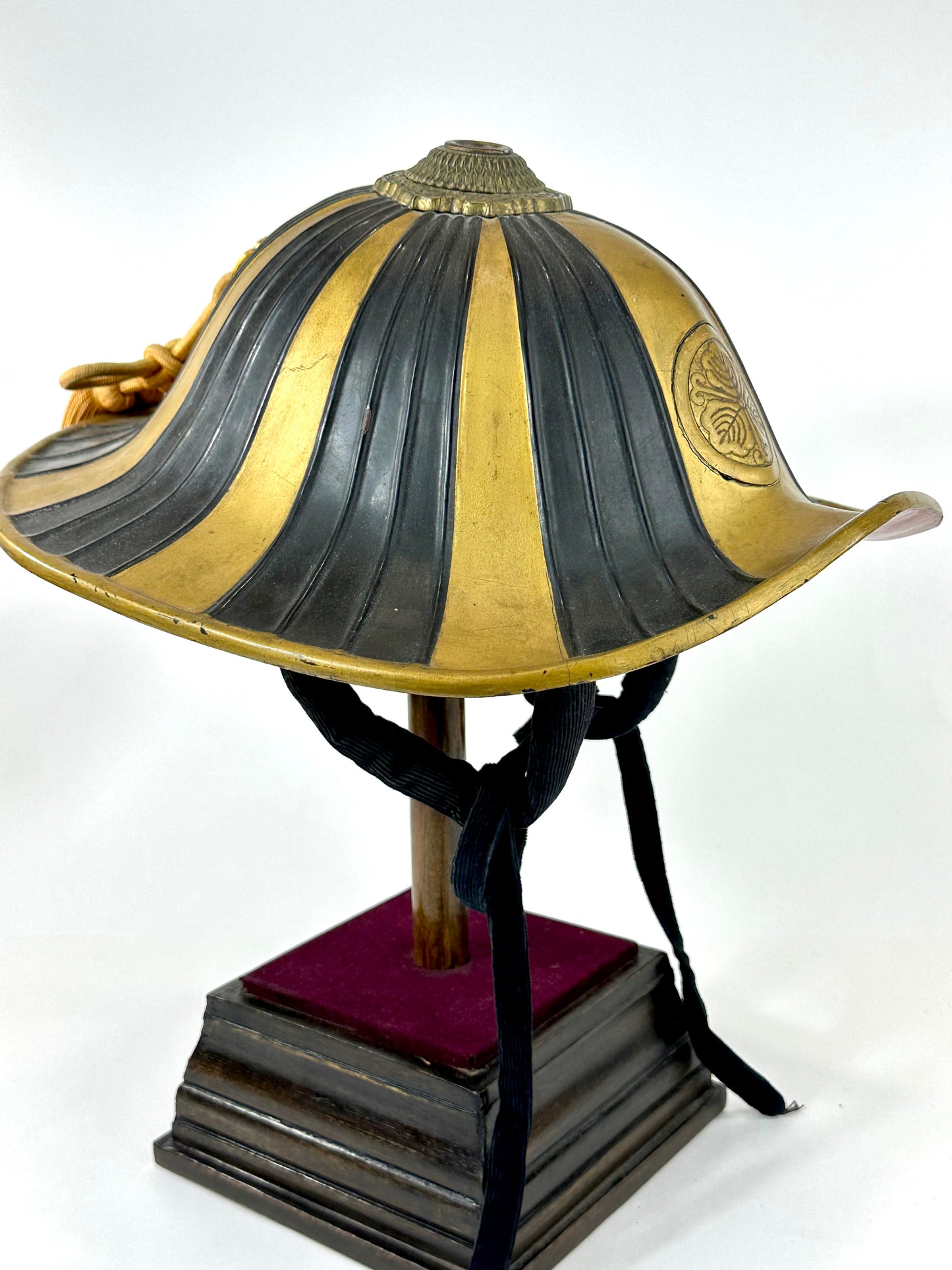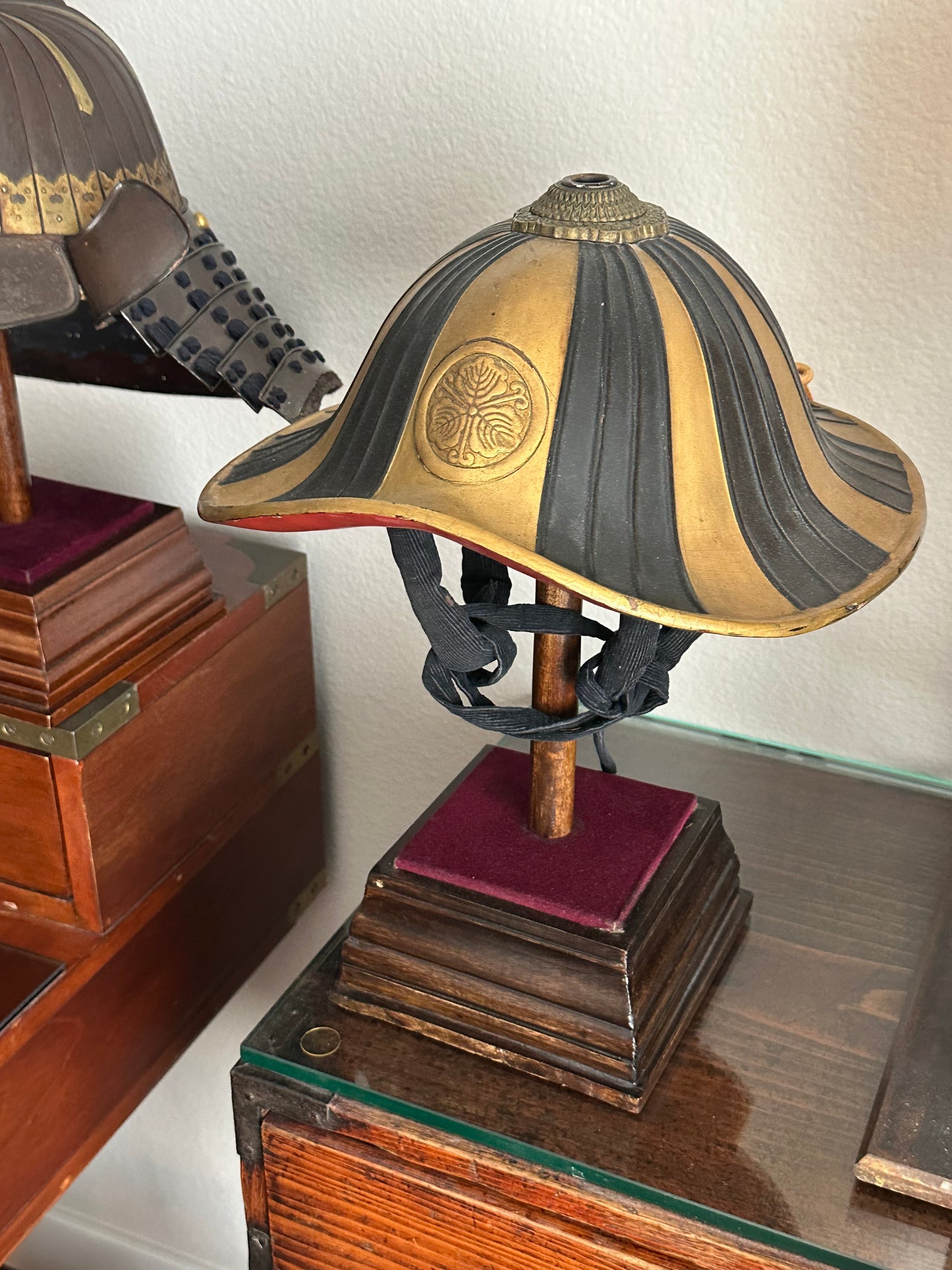Japanese Edo Period Samurai Jingasa Kabuto Helmet Vine-Oak Mon LS#117
Japanese Edo Period Samurai Jingasa Kabuto Helmet Vine-Oak Mon LS#117
Couldn't load pickup availability
Samurai Jingasa (陣笠) with Tsurugashiwa Crest — Edo Period, c. 1850–1868
Lacquered wood with gilt lacquer, black roiro lacquer, brass/bronze apex fitting, silk cords and tassel.
An elegant conical jingasa—the travel/field hat of the samurai—built on a light wooden core and finished in alternating gilt and deep black roiro panels with crisp fluting that echoes multi-plate kabuto. The front bears a raised family crest (kamon): Tsurugashiwa (蔓柏), the “three-vines oak” motif showing three curling vines entwined among three oak leaves. Long favored by the warrior class and Shinto devotees, the tsurugashiwa is also celebrated as the divine crest of Ebisu, one of the Seven Lucky Gods, signifying good fortune and steadfastness.
At the crown sits a tiered tehen-kanamono-style fitting; the rear retains its braided agemaki tassel, with long black chin cords surviving. By the late Edo period, richly finished jingasa like this were worn primarily for rank and ceremony, signaling the dignity and affiliation of the wearer while traveling in retinue or appearing in procession.
Dimensions (approx.): H 7 in; W 12 in; D 14 in
Condition: Very good display condition for age. Expected surface wear to gilding, light lacquer age-crackle and small flakes at high points; minor shrinkage lines to the wood visible near the crown; tassel and cords intact with age toning. No structural repairs observed; sits well on the stand (included).
Highlights
-
Striking alternating gold/black fluted panels
-
Prominent Tsurugashiwa (蔓柏) “three-vines oak” crest—associated with samurai houses, Shinto devotion, and Ebisu
-
Retained agemaki tassel and cords
-
Classic late-Edo ceremonial quality
Item Label
Jingasa (陣笠) with Tsurugashiwa Crest (蔓柏)
Japan, Edo Period (1603–1868)
Lacquered wood with gilt and black roiro; silk cords and tassel
H 6 in; W 12 in; D 14 in
Lightweight conical hat worn by samurai on travel and in procession. The medallion shows Tsurugashiwa, the “three-vines oak” crest—popular among warriors and Shinto adherents and revered as the divine emblem of Ebisu, god of good fortune. By the late Edo era, such finely finished jingasa served chiefly as status display rather than battlefield protection.
Museum Card
Jingasa (Samurai Hat) with Tsurugashiwa (蔓柏) “Three-Vines Oak” Crest
Japan, late Edo period, c. 1850–1868
Lacquered wood with gilt and black roiro lacquer; brass/bronze fitting; silk cords and tassel
H 6 in; W 12 in; D 14 in
This fluted, gold-and-black jingasa presents the ceremonial side of samurai equipment. Its raised Tsurugashiwa crest—three vines curling between three oak leaves—was widely used by warrior families and is closely linked to Shinto practice; it is famed as the divine crest of Ebisu, one of Japan’s Seven Lucky Gods. The tiered crown fitting recalls kabuto construction, while the surviving agemaki tassel and long cords point to parade use. In the peaceful Edo period, ornate jingasa like this shifted from protection to pageantry, proclaiming rank, affiliation, and auspicious blessing.
Condition: Age-consistent craquelure and edge wear to lacquer; minor abrasions to gilt; cords and tassel present and toned. Overall, a strong, original example.
